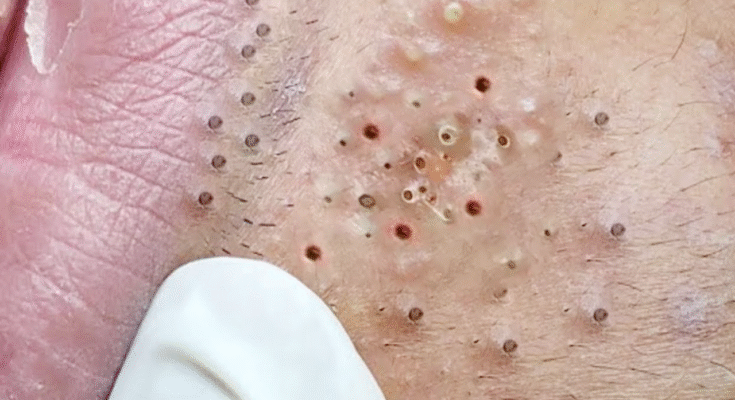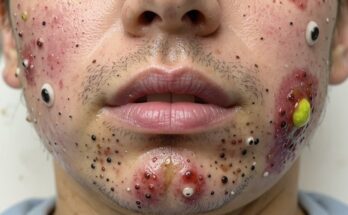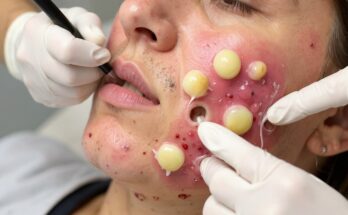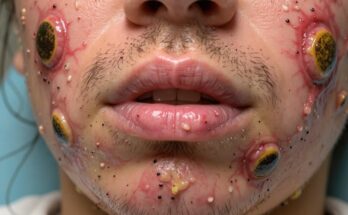Acne is one of the most widespread and emotionally challenging skin conditions affecting people of all ages. It doesn’t discriminate — teenagers, young adults, and even individuals well into their 30s–50s struggle with it. And while factors like hormones, stress, diet, and lifestyle play significant roles, one of the most powerful tools you have is the right skincare ingredients.
But with thousands of products on the market — each promising miracles — how do you know what actually works? Which ingredients are backed by dermatology research? Which ones are gentle enough for daily use? And how do you combine them for maximum results without irritating your skin?
This 5,000-word ultimate guide breaks down everything you need to know about acne-fighting powerhouse ingredients, from the classics to newer innovations. You’ll learn:
-
How each ingredient works
-
What skin types and acne types it’s best for
-
How to use and combine ingredients safely
-
The ideal routine order
-
What to avoid
-
How to build a powerful acne-clearing regimen
Let’s dive deep into the science, strategies, and secrets behind clear, healthier skin.
1. Understanding Acne: Why Ingredients Matter
Before exploring ingredients, it’s essential to understand the underlying biology of acne — because each ingredient you choose should target a specific part of the acne development process.
1.1 The Four Core Causes of Acne
Acne happens due to a combination of four main factors:
1. Excess Sebum (Oil) Production
Androgens (like testosterone) stimulate oil glands, leading to oily skin and clogged pores.
2. Clogged Pores
Dead skin cells accumulate and form plugs. This can lead to:
-
Whiteheads
-
Blackheads
-
Textural congestion
3. Bacterial Overgrowth
Inside clogged pores, Cutibacterium acnes grows — feeding on trapped oil and triggering inflammation.
4. Inflammation
Your immune system reacts to the bacteria and blockages, often causing redness, swelling, and painful pimples.
Every acne-fighting ingredient works on one or more of these causes.
That’s why product selection matters more than the number of products you use.
2. The Most Effective Acne-Fighting Ingredients (Dermatologist-Approved)
These powerhouse ingredients are the gold standard of acne treatment. Each one has decades of research supporting its effectiveness.
2.1 Salicylic Acid (BHA)
What It Is
A beta hydroxy acid that is oil-soluble — meaning it can penetrate deep into pores.
Why It Works
-
Clears clogged pores by dissolving oil and dead cells
-
Prevents blackheads/whiteheads
-
Reduces inflammation
-
Smooths texture
Best For
-
Oily skin
-
Blackheads
-
Congested pores
-
Mild to moderate acne
How to Use
-
0.5–2% cleansers or toners
-
Start 2–3x weekly
Avoid With
Excessive AHA/BHA stacking — can irritate the barrier.
2.2 Benzoyl Peroxide
What It Is
One of the most effective acne bacteria-killing ingredients.
Why It Works
-
Kills C. acnes (no bacterial resistance)
-
Unclogs pores
-
Reduces inflammation
-
Great for inflammatory acne
Best For
-
Red, inflamed pimples
-
Pustules
-
Moderate to severe acne
How to Use
-
2.5–5% (higher strengths don’t work better)
-
Use as a spot treatment or wash
-
Avoid fabrics (bleaches towels)
Avoid With
Retinoids in the same routine (apply BP morning, retinoids at night).
2.3 Retinoids (Vitamin A Family)
What They Are
A class of Vitamin A derivatives, including:
-
Retinol
-
Adapalene
-
Tretinoin
-
Tazarotene
Why They Work
-
Prevent clogged pores
-
Encourage cell turnover
-
Fade hyperpigmentation
-
Boost collagen to improve scars
-
Reduce inflammation
Best For
-
All forms of acne
-
Acne scars
-
Texture irregularities
How to Use
-
Apply at night
-
Start 2–3x per week
-
Always use moisturizer
Avoid With
Strong acids on the same night.
2.4 Niacinamide (Vitamin B3)
What It Is
A gentle, multi-functional vitamin.
Why It Works
-
Regulates oil production
-
Reduces inflammation
-
Soothes redness
-
Strengthens the barrier
-
Fades dark marks
Best For
-
All skin types
-
Sensitive, irritated, or dehydrated skin
-
Barrier repair and redness
How to Use
-
2–10% serums
-
AM or PM
Pairs Well With
Literally everything — including acids and retinoids.
2.5 Azelaic Acid
What It Is
A dicarboxylic acid naturally found in grains.
Why It Works
-
Kills acne bacteria
-
Reduces hyperpigmentation
-
Soothes inflammation
-
Unclogs pores
-
Helps rosacea-prone skin
Best For
-
Acne + pigmentation combo
-
Sensitive skin
-
Skin of color
How to Use
-
10–20% creams or gels
-
Safe for AM and PM
2.6 Alpha Hydroxy Acids (AHAs)
Includes:
-
Glycolic acid
-
Lactic acid
-
Mandelic acid
Why They Work
-
Exfoliate surface skin
-
Fade dark spots
-
Improve texture and scars
-
Increase radiance
Best For
-
Dull skin
-
Acne scars
-
Textural issues
Avoid If
You have sensitive skin (use mandelic acid instead).
2.7 Zinc
What It Is
A mineral with anti-inflammatory and oil-regulating properties.
Why It Works
-
Reduces sebum
-
Calms redness
-
Supports healing
Best For
-
Inflammatory acne
-
Hormonal breakouts
How to Use
-
Zinc PCA serums
-
Oral supplements (under medical supervision)
2.8 Sulfur
Why It Works
-
Absorbs excess oil
-
Dries active pimples
-
Kills bacteria
-
Unclogs pores
Best For
-
Oily skin
-
Occasional breakouts
-
Sensitive to benzoyl peroxide
2.9 Tea Tree Oil (Natural Option)
Why It Works
-
Antibacterial
-
Anti-inflammatory
-
Spot-treats pimples
Caution
Must be diluted; pure essential oil can burn skin.
2.10 Clay (Kaolin & Bentonite)
Why It Works
-
Draws out impurities
-
Absorbs excess oil
-
Controls shine
Best as a weekly mask for oily/combination skin.
3. Supporting Ingredients for Overall Skin Health
These ingredients don’t directly fight acne but support the skin’s healing process.
Ceramides
Restore skin barrier.
Hyaluronic Acid
Hydrates without clogging pores.
Panthenol
Soothes irritation.
Centella Asiatica
Reduces redness and sensitivity.
Squalane
Lightweight, non-comedogenic oil.
4. Ingredient Pairings: What Works vs. What Doesn’t
✅ Perfect Pairings
1. Niacinamide + Salicylic Acid
Balances oil and reduces irritation.
2. Retinoids + Niacinamide
Improves tolerance and results.
3. Azelaic Acid + Niacinamide
Brightens and calms.
4. Vitamin C + Sunscreen
Boosts protection and evens tone.
❌ Bad Combinations
1. Retinoids + AHAs/BHAs
Too irritating when used together nightly.
2. Benzoyl Peroxide + Retinol (same step)
BP oxidizes retinol.
3. Too many exfoliants
Damages the barrier → more acne.
5. Build Your Ideal Acne-Fighting Routine
Morning Routine (AM)
-
Gentle or salicylic cleanser
-
Niacinamide or Vitamin C
-
Lightweight moisturizer
-
SPF 30–50
Night Routine (PM)
-
Gentle cleanser
-
Retinoid OR benzoyl peroxide (alternate nights)
-
Barrier-supporting moisturizer
Weekly Extras
-
Clay mask
-
AHA exfoliant
-
Hydrating mask
6. Choosing Ingredients by Acne Type
1. Blackheads & Clogged Pores
-
Salicylic Acid
-
Retinoids
-
Clay masks
2. Red, Inflamed Acne
-
Benzoyl Peroxide
-
Azelaic Acid
-
Niacinamide
3. Hormonal Acne
-
Retinoids
-
Anti-androgen supplements (doctor-supervised)
-
Zinc
4. Acne + Dark Marks
-
Azelaic Acid
-
Vitamin C
-
AHAs
-
Retinoids
7. Common Mistakes to Avoid
-
Starting too many actives at once
-
Skipping moisturizer
-
Not using sunscreen
-
Over-exfoliating
-
Giving up after 2 weeks (acne takes 8–12 weeks to improve)
8. How Long Until You See Results?
-
Salicylic acid → 2–4 weeks
-
Benzoyl peroxide → 1–2 weeks
-
Retinoids → 8–12 weeks
-
Niacinamide → 4–6 weeks
-
Azelaic acid → 6–12 weeks
-
Supplements → 2–3 months
Consistency is the biggest factor.
9. When to See a Dermatologist
Seek professional help if you have:
-
Cystic acne
-
Painful nodules
-
Deep scarring
-
Acne lasting longer than 6 months
-
Acne affecting your mental health
Dermatologists can prescribe stronger medications and combine treatments for the best results.
10. Final Thoughts: Smart, Strategic Skincare Wins
Clear skin isn’t about having a massive routine — it’s about choosing the right ingredients, using them consistently, and avoiding over-complication.
The most powerful acne-fighting ingredients are:
-
Salicylic Acid
-
Benzoyl Peroxide
-
Retinoids
-
Niacinamide
-
Azelaic Acid
-
AHAs
-
Zinc
-
Sulfur
-
Tea Tree Oil
-
Clay
When used intelligently and combined with supportive barrier care and sunscreen, these ingredients can dramatically transform acne-prone skin over time.



